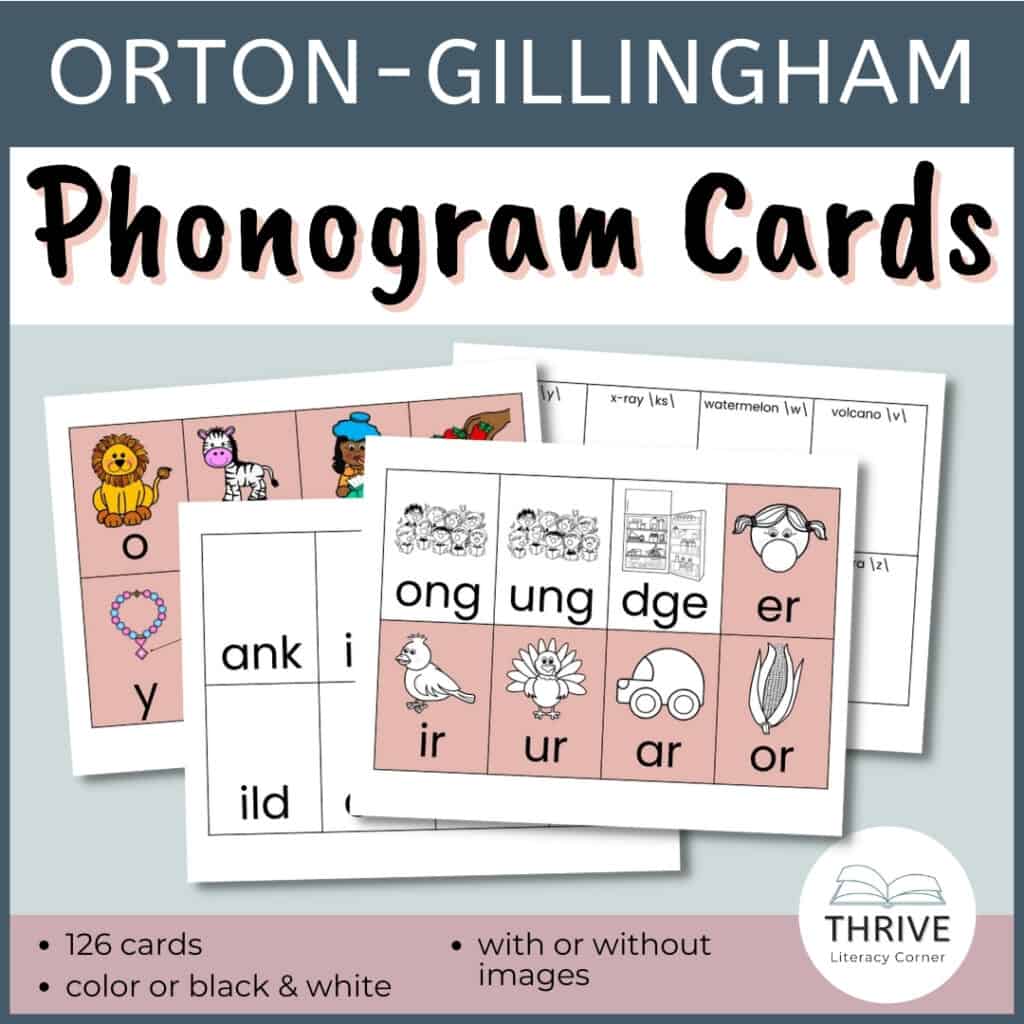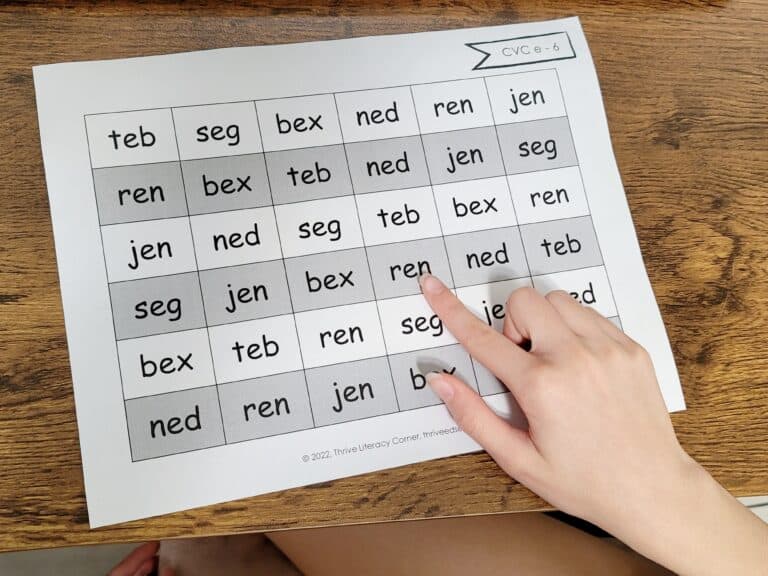How To Develop Automaticity In Reading and Spelling
This post may contain affiliate links, and I will earn a commission if you purchase through these links. Please read the disclosure policy for more details.
Many struggling readers lack automaticity, which prevents them from becoming fluent readers with good comprehension.
Automaticity is what allows us to do things without consciously thinking about them. And when it comes to reading and spelling, automaticity means being able to read and spell words quickly and accurately without having to stop and think about each letter.
So how can we develop this essential skill? Keep reading for some tips!
Grab 12 FREE phonics word lists & anchor charts by subscribing to my list!
*Most school spam filters block my emails, so please use a personal email.

What is automaticity?
Automaticity is the ability to do something without thinking about it – like riding a bike or tying your shoelaces.
Automaticity in reading is the ability to read words quickly and accurately, without having to stop and think about each letter or sound in the word. There is basically no effort in decoding. You look at the word and instantly read it.
Automaticity in spelling is writing the word without having to stop and think about each letter.

Why is automaticity important?
Developing automaticity in reading and spelling is important because it frees up your brain to focus on understanding what you’re reading, rather than on decoding the words.
It’s also important for writing, as it allows you to focus on expressing your ideas, rather than on how to spell the words.
How is automaticity different from fluency?
Automaticity is not the same as fluency.
Fluency is the ability to read accurately, quickly, and with expression. Automaticity is just the speed and accuracy of reading. It is a component of fluency but not the only thing that leads to fluency.
How To Develop Automaticity
Automaticity comes from having a good base of phonological awareness, decoding skills, and lots of practice.
Explicit Systematic Instruction
Use a program that uses explicit and systematic instruction.
This means all 44 phonemes are directly taught and phonological awareness skills progress from easy to more advanced. There is a clear scope and sequence to follow which builds on skills previously taught.
All concepts are taught directly with student-teacher interaction, without assuming concepts or ideas are absorbed through exposure.

All structured literacy programs use explicit systematic instruction. Find out more about structured literacy programs here.
Decoding Accuracy
Develop accuracy in decoding so students can read new and unfamiliar words on their own.
Letter-sound knowledge – Students should learn the 44 English phonemes (sounds) and the graphemes (letter combinations) that represent these phonemes.


Sound walls are a great way to introduce and regularly review the 44 phonemes. The visual representation of all the sounds helps students see that there are multiple ways to spell a sound and helps them when decoding and spelling. If they come across a word they cannot decode, they can look up at the sound wall for a cue.
Phonogram or grapheme sound spelling cards are a great way to teach all the graphemes for each phoneme. This helps students match the letters to the sounds to improve decoding and spelling.
Although there are only 44 phonemes in English, there are around 250 graphemes for the sounds. Phonogram cards teach one grapheme.
Instead of just teaching the letters, you teach the specific letter combinations for each sound. It’s so much easier for students to remember the combinations this way.
Phoneme-grapheme mapping is a great activity that ties in phonemes and graphemes. Students determine what the phonemes are in a word by segmenting, then they write the graphemes for those phonemes, and blend them to read the word.
Read more about sound walls and teaching graphemes.
Blending and segmenting skills – Students should be able to blend and segment at the phoneme level to read new words. This means they should work on breaking up words into their individual sounds and be able to blend individual sounds into a word.
Of course, this starts with word parts in the younger grades and builds up to working with sounds.


Daily phonological awareness drills are a quick and easy way to get these skills into your daily routine. My Daily Phonemic Awareness Task Cards take just minutes and cover all areas of phonological awareness.
Learn more about teaching phonological awareness here.
High-Frequency Words – Instruction in sight words, or more accurately, high-frequency words, is also important since many of these words cannot be decoded according to phonics rules.
The Heart Word Method is a great, explicit method of teaching high-frequency words that incorporates phonics so students are not just memorizing an endless list of words.
This method trains students to decode the phonetic parts of a word and memorize only the tricky part of the word by ‘heart’.
Learn more about the Heart Word Method here.
Decodable Texts – Students should use decodable texts to practice their decoding skills.
With systematic explicit instruction, the texts are all controlled so that students are reading texts that include only what they know and are currently working on.
This means students get to really practice their decoding skills which will improve their automaticity.

Predictable texts and leveled texts are not controlled and students may spend a lot of time decoding words with patterns they have not yet learned, guessing the words based on pictures, or they will simply memorize the story and not develop orthographic mapping of the words on the pages.

I am not saying to only use decodable texts. What I am saying is that decodable texts should be used when you’re goal is to improve automaticity and fluency.
Learn more about how to find and use decodable texts here.
Work Until Mastery – If you want students to have automaticity in reading, then their decoding accuracy must be at the mastery level. Mastery in regards to decoding means that students can not only read the words accurately, but also understand the text.
Drawing pictures to go along with sentences and matching words with images are examples of activities that would demonstrate mastery of decoding. It shows that students could read the words and understand what they mean.
The book in the image below is from the Explode the Code series. It’s a great supplement to phonics instruction and includes lots of practice for each skill.

Repeated Reading
Repeated reading has been shown to help increase reading fluency and automaticity. Students can re-read a text up to 3 times after having read it with the teacher.
The first time a student reads something, they will spend a lot of time decoding. Students need to see a word more than just a few times to have it orthographically mapped and be able to read it on sight. They also need to read a text a few more times to focus on visualization and comprehension.
Repeated reading is not simply rereading a text over and over. There are several ways to make repeated reading more fun, and all of them also increase reading fluency.
Learn more about repeated reading and improving reading fluency here.

Lots of Practice
For anything to become automatic, you need a lot of practice.
Provide ample opportunities for students to work on their automaticity.
Practice the skills outlined above and provide lots of exposure to texts. The more students come across and read a word, the quicker they will learn it.
Provide lots of phonics games, activities, worksheets, and texts for each kill you teach.
Bottom Line
Automaticity is so important for reading and spelling because it makes fluency possible. When readers are able to read quickly and accurately without having to stop and think about each letter or sound, they can focus on the meaning of what they are reading.
Spelling becomes automatic when students are able to write a word without having to stop and spell each letter out loud.
The more practice students get, the more automaticity they develop. This means that they can spend less time decoding words and more time understanding what they are reading.
Want to remember this? Save How To Develop Automaticity In Reading and Spelling to your favorite Pinterest board!















